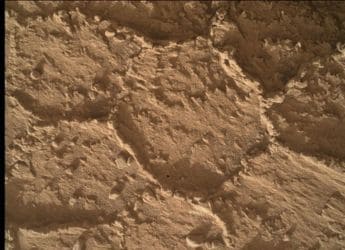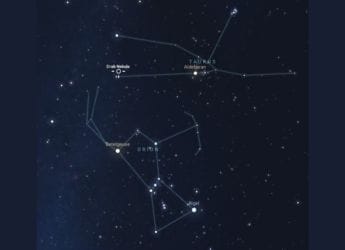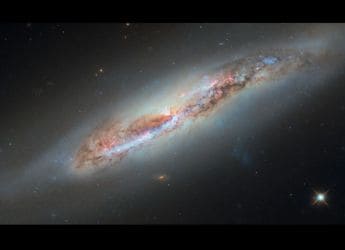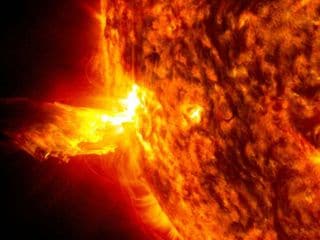- Home
- Science
- Science News
- NASA's James Webb Telescope Damaged After Being Hit By Space Rock: Report
NASA's James Webb Telescope Damaged After Being Hit By Space Rock: Report
Since the launch, the James Webb Space Telescope has been struck by six micrometeorites.

The $9.7 billion space telescope was launched on December 25, 2021.
The world's largest and most powerful space telescope by NASA, James Webb Space Telescope (JWST), has suffered massive damage from an asteroid strike in May.
The telescope was built by the National Aeronautics and Space Administration (NASA), in collaboration with the European Space Agency (ESA), and the Canadian Space Agency (CSA). It is made up of precious technology and it carries one of the largest mirrors on a space telescope in order to observe phenomena and events in space previously inaccessible to the world.
For the telescope to fulfil this ambition, it is required that the JWST remains operational for years to come. However, concerns are now being raised over the longevity of the project as it was revealed that an asteroid strike in May 2022 might have left the telescope in worse shape than previously understood.
As per Forbes, a group of scientists outlined the performance of the space telescope. They reported problems that “cannot be corrected”. Writing about the projected lifetime of the Webb telescope, the researchers said, “At present, the largest source of uncertainty is long-term effects of micrometeoroid impacts that slowly degrade the primary mirror.”
Also Read | NASA's Perseverance Rover Spots Hair Ball-Like Object On Mars
The scientists informed that since the launch, the Webb telescope has been struck by six micrometeorites. While five of the meteorites did a negligible amount of damage, a sixth caused some damage to the JWST.
Providing more information regarding the asteroid strike, the researchers said, “The micrometeoroid which hit segment C3 in the period 22—24 May 2022 UT caused a significant uncorrectable change in the overall figure of that segment. However, the effect was small at the full telescope level because only a small portion of the telescope area was affected.”
Notably, as the damage has taken place on one of the panels, it will not impact the Webb telescope's image-taking abilities at all. However, as per the outlet, the engineers who designed Webb know that its mirrors and sun-shield will unavoidably slowly degrade from micrometeoroid impacts.
Also Read | NASA, SpaceX Send Climate Research Experiments to ISS Aboard Resupply Mission
Moreover, scientists also expect Webb's detectors to be gradually damaged by charged particles. They believe that its sun-shield and innovative five-layer insulation will degrade from space weathering. Since its mirror is exposed to space, the researchers also said that micrometeoroid strikes are difficult for Webb to avoid.
The $9.7 billion space telescope was launched on Christmas Day in 2021. Earlier this month, NASA revealed the first of many images that it captured of deep space.
Get your daily dose of tech news, reviews, and insights, in under 80 characters on Gadgets 360 Turbo. Connect with fellow tech lovers on our Forum. Follow us on X, Facebook, WhatsApp, Threads and Google News for instant updates. Catch all the action on our YouTube channel.
Related Stories
- Samsung Galaxy Unpacked 2025
- ChatGPT
- Redmi Note 14 Pro+
- iPhone 16
- Apple Vision Pro
- Oneplus 12
- OnePlus Nord CE 3 Lite 5G
- iPhone 13
- Xiaomi 14 Pro
- Oppo Find N3
- Tecno Spark Go (2023)
- Realme V30
- Best Phones Under 25000
- Samsung Galaxy S24 Series
- Cryptocurrency
- iQoo 12
- Samsung Galaxy S24 Ultra
- Giottus
- Samsung Galaxy Z Flip 5
- Apple 'Scary Fast'
- Housefull 5
- GoPro Hero 12 Black Review
- Invincible Season 2
- JioGlass
- HD Ready TV
- Laptop Under 50000
- Smartwatch Under 10000
- Latest Mobile Phones
- Compare Phones
- OnePlus 15R
- Realme Narzo 90x 5G
- Realme Narzo 90 5G
- Vivo S50 Pro Mini
- Vivo S50
- OPPO Reno 15c
- Redmi Note 15 5G
- Redmi Note 15 Pro 5G
- Asus ProArt P16
- MacBook Pro 14-inch (M5, 2025)
- Infinix Xpad Edge
- OnePlus Pad Go 2
- OnePlus Watch Lite
- Just Corseca Skywatch Pro
- Acerpure Nitro Z Series 100-inch QLED TV
- Samsung 43 Inch LED Ultra HD (4K) Smart TV (UA43UE81AFULXL)
- Asus ROG Ally
- Nintendo Switch Lite
- Haier 1.6 Ton 5 Star Inverter Split AC (HSU19G-MZAID5BN-INV)
- Haier 1.6 Ton 5 Star Inverter Split AC (HSU19G-MZAIM5BN-INV)

















